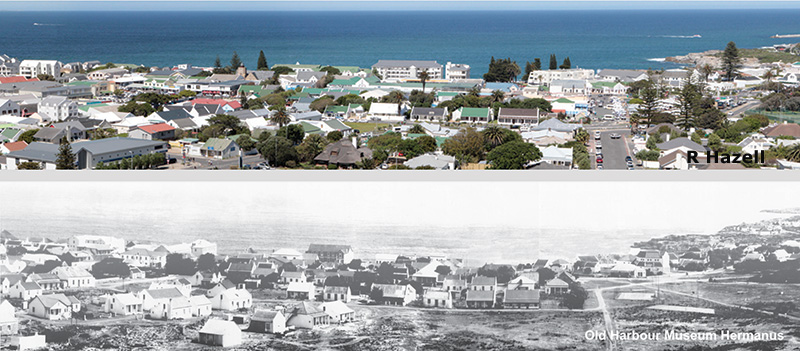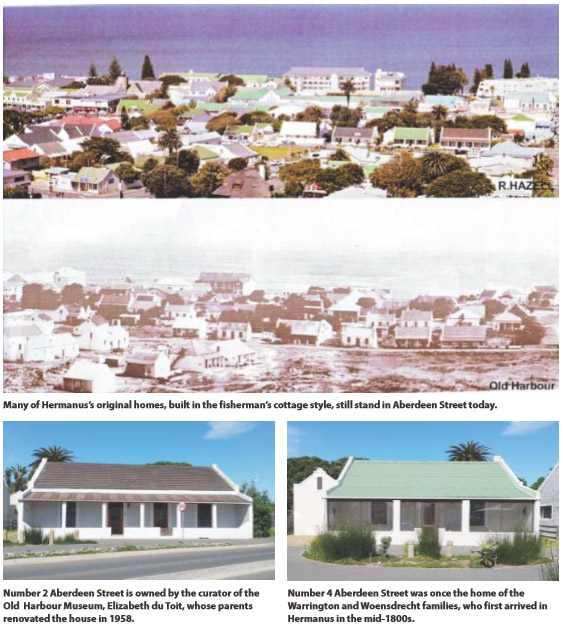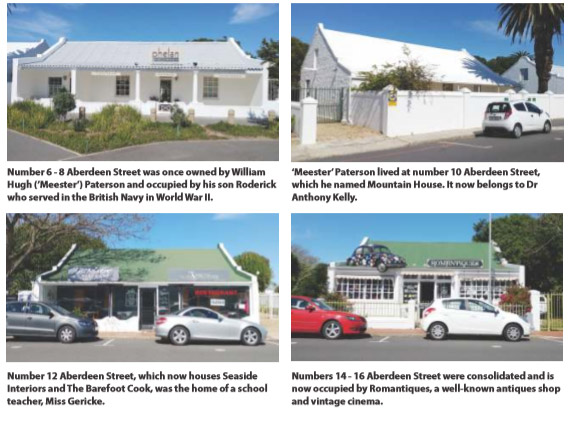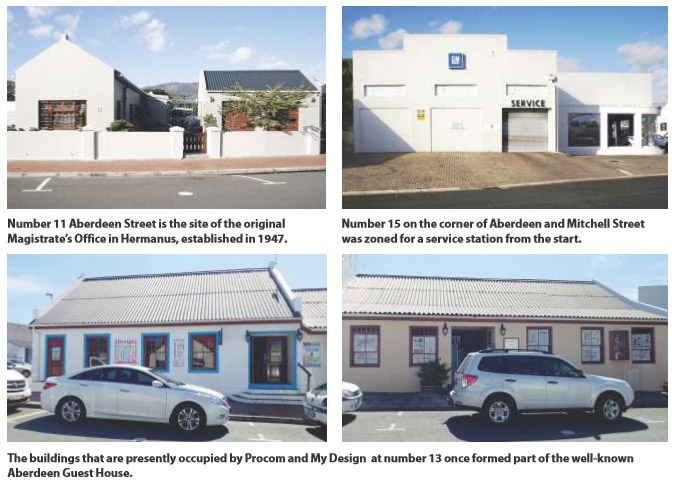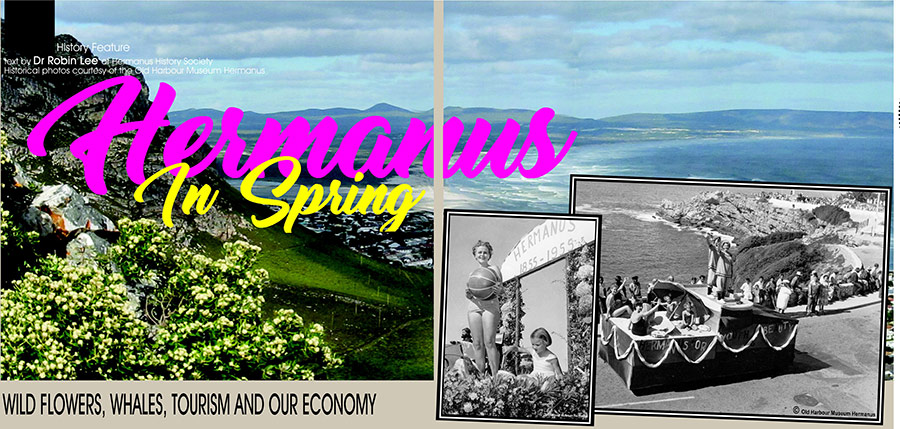
Hermanus in Spring: Wild Flowers, Whales Tourism and Our Economy
September 6, 2017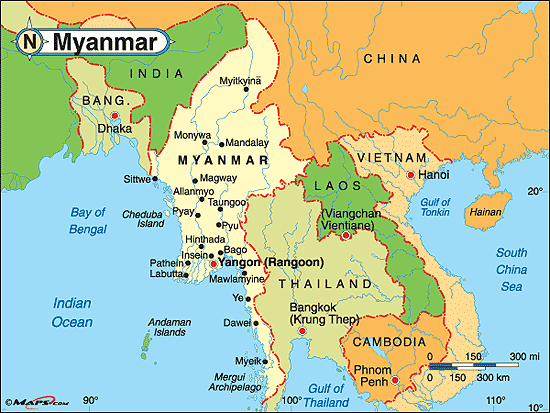
An Elephant Whisperer in Hermanus? The Story of Harold Langford-Browne
October 4, 2017On 24 September South Africa celebrated Heritage Day. But regrettably, Hermanus has consistently destroyed its heritage of domestic residential buildings, most of which were in the fisherman’s cottage style. Not one of the streets in central Hermanus looks at all as it did originally, but Aberdeen Street is one of the few that still retains a sense of history, writes Dr ROBIN LEE of the Hermanus History Society.
High Streets were surveyed for the first time in the 1870s. In due course, there were buildings on all of them, mainly residential, although many were later converted to business premises. Aberdeen Street used to run roughly parallel to Long Street and Main Road from Magnolia Street to Mitchell Street. In the 1920s it comprised some 14 residential buildings, one boarding house and one service station. Life in Hermanus was very different 100 years ago. The surveyed plots originally sold for around £5. The houses did not cost much more and were built of stones and boulders, fixed with clay. The paint used on the exterior was made of crushed shells (probably perlemoen) treated in a lime kiln and mixed with water. No house had a toilet indoors; toilets were at the bottom of the yard furthest from the house. Inside, chamber pots were used and the contents
Life in Hermanus was very different 100 years ago. The surveyed plots originally sold for around £5. The houses did not cost much more and were built of stones and boulders, fixed with clay. The paint used on the exterior was made of crushed shells (probably perlemoen) treated in a lime kiln and mixed with water. No house had a toilet indoors; toilets were at the bottom of the yard furthest from the house. Inside, chamber pots were used and the contents thrown into the bucket in the outside toilet. Buckets were removed by municipal employees in a cart with a bell to alert home owners to bring out the buckets. There were very few retail shops and everyone had vegetable gardens behind the
There were very few retail shops and everyone had vegetable gardens behind the house, and kept chickens for food and eggs. Some owners also kept cows and horses on the plot. Fish was the cheapest form of protein and essential in every family. Midwives delivered babies at home and until 1928, when Alex. Grant Pharmacy opened, all medicines were home-made. The plot on the corner of Aberdeen and Royal Street, which is still vacant, was a popular playground for local children. They usually went to school barefoot and shoes, often handed down, were only worn on Sundays.Since the original survey, there has been some consolidation of adjacent plots and there are now 16 buildings. A few years ago Aberdeen Street was divided into two very unequal parts by Royal Street, the relief road around the CBD. Numbers 1, 3 and 5 are now on the northern side of Royal Street, while all the other numbers are on the southern side.
Since the original survey, there has been some consolidation of adjacent plots and there are now 16 buildings. A few years ago Aberdeen Street was divided into two very unequal parts by Royal Street, the relief road around the CBD. Numbers 1, 3 and 5 are now on the northern side of Royal Street, while all the other numbers are on the southern side.
At number 2 Aberdeen Street, renovations were done to the house in 1958, by the owner Jack Funston. He added a bathroom at the cost of £100, but the lavatory remained outside. Japie du Toit bought this property in the 1960s and lived there with his wife Johanna and their four children.
Their daughter, Elizabeth du Toit, who is curator at the Old Harbour Museum, now owns the home.
At number 4 Aberdeen Street two sets of people of importance lived at different times: the Warringtons and the Woensdrechts. James Warrington came to Herries Bay (now Hawston) in 1854, married Elizabeth Henn and moved to Hermanus in 1857. This branch of the family was involved with the establishment of the first shop in Hermanus, which also served as the first Post Office.
The Woensdrecht family also go back to the origins of the town, arriving in the 1860s. In the early 20th century, Danie Woensdrecht became famous for his position as the ghillie of Sir William Hoy. He organised the construction of Sir William and Lady Hoy’s graves and headstones at the top of Hoy’s Koppie.Historically the most important family to have lived in Aberdeen Street was undoubtedly the Paterson family, who lived at numbers 6-10. William Hugh Paterson (1873-1963) was an immediate descendant of one of the first families to settle in the village. From
Historically the most important family to have lived in Aberdeen Street was undoubtedly the Paterson family, who lived at numbers 6-10. William Hugh Paterson (1873-1963) was an immediate descendant of one of the first families to settle in the village. From boyhood he showed a strong intellectual capacity and became Principal of the St Peters School in 1895. In this position he was addressed as “Meester” (Master) and this became his title as far as everyone in the village was concerned. In 1904 he became the first town clerk and was elected Mayor in 1920. Meester loved the mountains and knew and climbed every peak around Hermanus. He had a vast knowledge of Cape flora and in 1923 he took ‘wild flowers’ (fynbos) from the Hermanus region to England where they were much admired by the English. He had as many as 40 pickers in the mountains and for years
In 1904 he became the first town clerk and was elected Mayor in 1920. Meester loved the mountains and knew and climbed every peak around Hermanus. He had a vast knowledge of Cape flora and in 1923 he took ‘wild flowers’ (fynbos) from the Hermanus region to England where they were much admired by the English. He had as many as 40 pickers in the mountains and for years afterwards he exported flowers to Germany and the UK. Most popular were dried ‘Everlastings’ which were used to stuff mattresses. In 1955, on the centenary of Hermanus, Paterson wrote and published the first history of the town, which has been required reading for all later historians. In 1960 Meester Paterson was the recipient of the Freedom of Hermanus. He died in 1963, aged 89. He named his own home (number10) ‘Mountain House’. It now belongs to Dr Anthony Kelly.
In 1955, on the centenary of Hermanus, Paterson wrote and published the first history of the town, which has been required reading for all later historians. In 1960 Meester Paterson was the recipient of the Freedom of Hermanus. He died in 1963, aged 89. He named his own home (number10) ‘Mountain House’. It now belongs to Dr Anthony Kelly.
The Paterson family occupied the remaining four houses for different times. Meester’s eldest son, Roderick lived at number 8 from about 1947 until his death in 1955. He practised as a journalist, served in the British Navy in World War II and then became a war correspondent. He organised a historic photographic exhibition in Hermanus in 1947. Phelan Footwear is the current occupant of the house.Number 12 was originally owned by Miss Gericke, a schoolteacher at the Klipskool and known to the pupils as a ‘kwaai tannie’ (fierce auntie). She had all kinds of fruit trees in her back garden and the children used to dare each other to steal fruit from her garden. Seaside Interiors and a popular restaurant, Barefoot Cook, are presently on the site.
Number 12 was originally owned by Miss Gericke, a schoolteacher at the Klipskool and known to the pupils as a ‘kwaai tannie’ (fierce auntie). She had all kinds of fruit trees in her back garden and the children used to dare each other to steal fruit from her garden. Seaside Interiors and a popular restaurant, Barefoot Cook, are presently on the site.
Numbers 14 and 16 were consolidated by a Mrs Taylor who added several new buildings to the original house. This was used as a holiday home for her and her children. After a long period of occupation by Hubbard’s Cupboard this site is now occupied by Romantiques, a famous antique shop and cinema. The property is owned by Mrs C Van Hoogstraten.
Numbers 18 and 20 were also consolidated from an early date and housed the butchery known as Vorster’s Meat Market. This was a joint venture by the van Blommestein family and Alwyn Vorster. Later, it became known as the Meat Lovers Market. The buildings are now occupied by several businesses, including El-Al Funeral Services and Caroline’s Closet.
Number 11 is the site of the original Magistrate’s Office in Hermanus. This was established in 1947 for the first resident magistrate Mr H P van Niekerk, who had previously visited Hermanus by horse cart from Caledon every three months for a 3 day sitting. The property is now privately owned and used as a holiday home and a small business.The building at number 13 was once the very well-known Aberdeen Guest House. The owners were
The building at number 13 was once the very well-known Aberdeen Guest House. The owners were Mrs Grace Geldenhuys and husband Piet (Muishond) Geldenhuys. It was home to 6 – 7 unmarried young working people at any time, as it was within walking distance of church, school, work and shops. Mrs Geldenhuys was famous for her Mrs Geldenhuys was famous for her sunday lunches, which were open to the public. Takeaway lunches were also available during the week. When Grace retired some close relatives took over, but sold it in 1980. The buildings are presently occupied by My Design and Procom. Number 15 on the corner of Aberdeen and Mitchell Street was zoned for a service station from the start and originally owned by the brothers Gillespie. It was built by Owen Thorpe Snr out of concrete blocks, at a cost of £4000. It was built as a service station. It has been known as Sterling Auto since 1991.Members of the Hermanus History Society researched and photographed Aberdeen Street’s buildings in 2016. The full document is available in
Number 15 on the corner of Aberdeen and Mitchell Street was zoned for a service station from the start and originally owned by the brothers Gillespie. It was built by Owen Thorpe Snr out of concrete blocks, at a cost of £4000. It was built as a service station. It has been known as Sterling Auto since 1991.Members of the Hermanus History Society researched and photographed Aberdeen Street’s buildings in 2016. The full document is available in
Members of the Hermanus History Society researched and photographed Aberdeen Street’s buildings in 2016. The full document is available in pdf
format on the History Society website (www.hermanushistory-society.co.za) and can be downloaded. The Aberdeen Street research was collected by SJ du Toit, Angela Heslop, Corrie Smit, Michael Clark and Julius Sell. Photographs by Dinkie Marais and Ronnie Hazell.
The History Society is currently researching another historic street, High Street, as part of the CBD revitalisation project and an article will be published in the near future.
Contact Dr Robin Lee at robinlee@hermanus.co.za
2017-09-26

